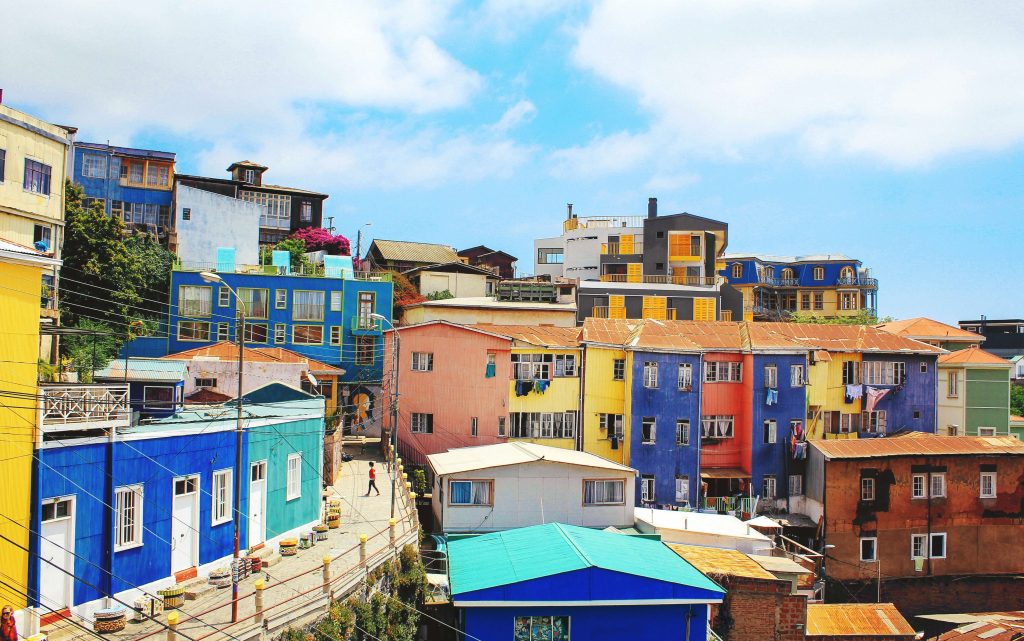So you may be wondering what’s the difference between Castellano, español and Latin American Spanish. So in one sentence: Castellano and español are the same. Peninsular Spanish is the name of the Castilian spoken in Spain. The other forms of Castilian (Spanish) spoken elsewhere are all classified as Latin American Spanish.
Phew, now that we have got that clear we will explore Spanish speaking countries all around the world.
Spanish is the second-most spoken language in the United States, after English, and is the dominant language in many of the neighboring countries in the Western Hemisphere. It also happens to be an extremely beautiful language that is as useful as it is musical. The real kick is that every country uses Spanish with their own little differences, so getting to know the local lingo is very cool.
Read on to discover the Spanish diaspora and where Spanish speakers can be found.
Mexico

The country has the largest Spanish-speaking population in the world, with almost a third of the global total of all Spanish native speakers. Almost all of the Mexican population speaks Spanish, 99.3% according to the latest census; nonetheless, around 5.4% still speak an indigenous language besides Spanish. The indigenous languages with the most speakers are Nahuatl, spoken by approximately 1.37 million people, Yukatek Maya spoken by some 700,000 people and the Mixtec and Zapotec languages, each spoken by more than 400,000 people. The National Institute of Indigenous Languages (INALI) recognizes 68 linguistic groups and some 364 different specific varieties of indigenous languages. These languages have had status as national languages, with equal validity alongside Spanish in all the areas and contexts in which they are spoken.
Colombia

More than 99.2% of Colombians speak Latin American Spanish; known for its strong ‘r’ and strong pronunciation of every letter. 65 Amerindian languages, two Creole languages, the Romani language, and Colombian Sign Language are also spoken in the country. Hold on to your sombreros for the next fact; including Spanish, a total of 101 languages are present in Colombia. How cool is that? Best estimates recorded 71 languages that are spoken in the country today—most of which belong to the Chibchan, Tucanoan, Bora–Witoto, Guajiboan, Arawakan, Cariban, Barbacoan, and Saliban language families. There are currently about 850,000 speakers of native languages.
Spain

Spain is openly multilingual and the constitution establishes that the nation will protect “all Spaniards and the peoples of Spain in the exercise of human rights, their cultures and traditions, languages, and institutions. Spanish (español), officially recognized in the constitution as Castilian (Castellano), is the official language of the entire country. Very typical of español Castellano is the soft ‘c’ with ‘ci’ and ‘ce’, pronounced as ‘th’. For example, gracias becomes gratheas.
Argentina

The de facto official language is Spanish, spoken by almost all Argentines. The country is the largest Spanish-speaking society that universally employs voseo, the use of the pronoun vos instead of tú (“you”), which imposes the use of alternate verb forms as well. Due to the extensive Argentine geography, Spanish has a strong variation among regions, although the prevalent dialect is Rioplatense, primarily spoken in the La Plata Basin and accented similarly to the Neapolitan language. Italian and other European immigrants influenced Lunfardo—the regional slang—permeating the vernacular vocabulary of other Latin American countries as well.
Peru

According to the Peruvian Constitution of 1993, Peru’s official languages are Spanish and Quechua, Aymara and other indigenous languages in areas where they predominate. Spanish is spoken by 85.9% of the population and Quechua by 13.2%, Aymara by 1.8% while other languages make up the remaining 0.9%. Spanish is used by the government and is the mainstream language of the country, which is used by the media and in educational systems and commerce.
Venezuela
In Venezuela, there are about 40 languages that are spoken, yet Spanish is the official language and the most widely spoken language in the country. Native Spanish speakers in Venezuela account for almost 98% of the population. Venezuelan Spanish is similar to Spanish spoken in Central America but with a Caribbean influence. There are also many indigenous languages spoken in Venezuela such as Wayuu, Warao, Piaroa, Kahlihna, and Manduhuaca.
Chile
Chile, officially known as the Republic of Chile, is mostly a Spanish speaking country, with a few exceptions of native and immigrant language communities. Chile today has 9 living languages and 7 that have become extinct. Around 17 million people speak Chilean Spanish as their first language out of a total population of 18 million people. Chilean Spanish is a Spanish dialect that is sometimes difficult for speakers of the Castilian variant of Spanish to understand. Some other native languages are Mapudungun (114,000 speakers), Quechua (8,200 speakers), and Rapa Nui (3,400 speakers).
Spanish is also the official language in Bolivia, Costa Rica, Dominican Republic, Ecuador, Equatorial Guinea, El Salvador, Guatemala, Honduras, Nicaragua, Panama, Paraguay, Puerto Rico, and Uruguay. Spanish is also widely spoken in the United States, Andorra, Belize, and Gibraltar.
Impress your Spanish speaking friends wherever they are, and learn the lingo!
Govind Nair
Latest posts by Govind Nair (see all)
- A Guide to Islamic and Arabic Education in Dubai - October 20, 2022
- 7 Languages to Win Hearts This Valentine’s Day - February 6, 2021
- Why Language Learning Shouldn’t Be A New Year’s Resolution - December 28, 2020



